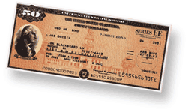As promised last month in my How To Predict I-Bond Savings Bond Rates post, the CPI-U inflation data for September is out, and we can get busy predicting the new I-Bond rates that will be officially announced on November 1st, so we can make educated decisions on to buy now or later. Spoiler: it’s gonna be high, as in over 6% APR high. But, first the math:
The inflation-linked part of the I-Bond rate is based on the inflation change for the last six months as measured by the CPI-U:
March CPI-U = 193.3
September CPI-U = 198.8
[Read more…]
 It looks like my
It looks like my  The Best Credit Card Bonus Offers – 2025
The Best Credit Card Bonus Offers – 2025 Big List of Free Stocks from Brokerage Apps
Big List of Free Stocks from Brokerage Apps Best Interest Rates on Cash - 2025
Best Interest Rates on Cash - 2025 Free Credit Scores x 3 + Free Credit Monitoring
Free Credit Scores x 3 + Free Credit Monitoring Best No Fee 0% APR Balance Transfer Offers
Best No Fee 0% APR Balance Transfer Offers Little-Known Cellular Data Plans That Can Save Big Money
Little-Known Cellular Data Plans That Can Save Big Money How To Haggle Your Cable or Direct TV Bill
How To Haggle Your Cable or Direct TV Bill Big List of Free Consumer Data Reports (Credit, Rent, Work)
Big List of Free Consumer Data Reports (Credit, Rent, Work)